Nichole Paxson
United States Civilian –
1513R (PST) hours 24 MAY 2028CE
SOUTHERN CALIFORNIA.
THIS IS THE EMERGENCY ALERT SYSTEM OF THE GREATER SAN DIEGO AREA. THE UNITED STATES OF AMERICA IS UNDER ATTACK. THIS IS NOT A DRILL. IF YOU ARE IN OR AROUND SAN DIEGO COUNTY, TAKE SHELTER IMMEDIATELY. GO TO AN INTERIOR ROOM AND TAKE COVER. IF YOU ARE OUTSIDE, SEEK SHELTER UNDER A STURDY STRUCTURE. COVER YOUR HEAD AND BODY. DO NOT STAND IN THE OPEN DURING AERIAL ATTACK.
THIS IS THE EMERGENCY ALERT SYSTEM OF THE GREATER SAN DIEGO AREA. THE UNITED STATES OF AMERICA IS UNDER ATTACK. THIS IS NOT A DRILL. IF YOU ARE IN OR AROUND SAN DIEGO COUNTY, TAKE SHELTER IMMEDIATELY. GO TO AN INTERIOR ROOM AND TAKE COVER. IF YOU ARE OUTSIDE, SEEK SHELTER UNDER A STURDY STRUCTURE. COVER YOUR HEAD AND BODY. DO NOT STAND IN THE OPEN DURING AERIAL ATTACK.
It repeats endlessly, on every station, every phone, and every television. Her phone buzzes, her instincts pressing her to snatch it from the center console.
Was it the school?
Was it him? Was he okay?
The car senses an obstacle ahead, its collision avoidance system sounding a chime that made her aware.
BEEPEPEPEPEPEP.
“Shit!” she slams on the brakes, narrowly missing a small car that stopped suddenly in front of her.
Now on the shoulder, she looks to her left, watching a line of cars repeat the same pattern, this time piling atop each other, smashing one by one like sardines, their airbags popping in sequence with each hit. . The ground shakes, an explosion in the distance set forth a plume of smoke rising in contrast to the deep blue sky of Southern California.
Horns honk. Tires screech.
She whips the steering wheel to the right, driving the SUV onto the shoulder in panic. People are running from their disabled cars, shouting at each other, some of their faces and heads bloodied from trauma.
Why isn’t her phone working?
It won’t dial out!
“SHIT!” she hollers again, looking around for a way out, anything, even if she has to ram someone.
Whiplash. A truck bumps her, the man driving so determined to escape that he never acknowledges the hit. Instead he honks, gunning this throttle, pushing her SUV into the guardrail before he’s free to go. It’s too late to get angry, too frantic to worry about trivial things that just hours ago would be everything.
She doesn’t care about insurance.
She doesn’t care about police reports.
She only wants her daughter, a five-year-old girl happily playing in school fifteen minutes away under normal circumstances, but today is anything but. The tires smack back down onto the pavement, her mirror shredded by contact with a minivan, her right foot pressing the throttle to the floor. The SUV flies, its engine roaring, her eyes filling with tears as she swerves back onto the sidewalk, hoping that no one is still there to accidentally run over.
THIS IS THE EMERGENCY ALERT SYSTEM OF THE GREATER SAN DIEGO AREA. THE UNITED STATES OF AMERICA IS UNDER ATTACK. THIS IS NOT A DRILL. IF YOU ARE IN SAN DIEGO COUNTY—
Left onto 4th Avenue, then right onto Orange. She knows the roads by heart. The detour is easy to plan, but everyone is doing the same now. Free flowing traffic is no more, the gridlocked panic of flustered and confused Americans shuts down the city traffic system in minutes.
Still, she finally makes it on Interstate 5 North.
The ground shakes again. Then again.
And AGAIN. AGAIN!
Thunder claps rumble from a distance, her mind anticipating the end each time an orange fireball bursts. She knows what to expect, the bright blue flash, the heatwave, and then finally the blast wave of terror.
But these aren’t nuclear weapons.
They are conventional warheads, streaking down from the sky so quickly that her eyes barely see the contrails. The booms don’t match what she sees. They’re spaced too far apart, sometimes at random, and sometimes from above or behind her.
“Sonic booms,” he would say.
Her husband, a US Marine stationed at MCAS Miramar, was always ready to answer her questions, but he wasn’t here now when she needed him.
Interstate 5 Northbound. She follows a line of cars swerving through mangled vehicles, dodging the countless fender benders that cascaded since the eruption of attack. Here, she finally gets a view of San Diego, counting eleven—BOOM—now twelve plumes in the distance that she can see, even more behind her.
Obvious targets seem the heaviest hit:
North Island Naval Air Station – six plumes
San Diego International – five plumes
Miramar? With so much smoke, she couldn’t tell.
He mentioned this as a possibility. He always ranted about things like this, wanting her to be prepared, to have an emergency plan in the event that this actually happened.
Her phone still refused to dial out.
“We’re sorry, but all lines are busy. Please try again later.”
“Dammit!”
BEEPEPEPEPEPEP.
She hit another car, bouncing off its side and scraping along the entire body of her SUV. The side airbags deploy with a loud bang, but she continues on.
“OHMYGOD.”
And there in the distance, she sees a streak of contrails burst through the sky, maneuvering down and past the defense system’s guns faster than she can comprehend. One makes a sharp last second turn, missing the harbor, yet unable to bleed enough speed in the correction. Her eyes follow it down, straight into a high rise building downtown. Two more follow closely behind, crashing into Logan Heights, the third one hit by a surface to air missile, breaking into smaller pieces that rain west to east from Southcrest to Mountain View. She sees explosions, the fire from their speed searing everything around them.
Oh god.
Lindsey’s school!
Fire trucks merge onto the highway, following a group of police cars with their sirens blaring, their lights flashing, their bumpers ramming away people that refuse to move.
“We’re sorry, but all lines are busy. Please try again later.”
“Fucking phone!” she creams, wiping away tears.
Things calm down, if only for a few minutes.
She collects herself, remembering to be strong, to be the mother she needs to be and not the frightened, terrified, and frantic person she is. Deep breaths. In, and out. She repeats this, over and over, loosening her panicked grip on the steering wheel and sitting back into the seat.
This is just another normal day.
Just another normal drive on the crowded interstate.
Relax. Just relax. It’ll be okay. She only has to get her daughter. That’s it. Just get Lindsey.
Try a new radio station. Maybe they have some music.
THIS IS NOT A DRILL. IF YOU ARE IN OR AROUND SAN DIEGO COUNTY, TAKE SHELTER IMMEDIATELY. GO TO AN INTERIOR ROOM AND TAKE COVER. IF YOU ARE OUTSIDE, SEEK SHELTER UNDER A STURDY STRUCT—
And another station.
—IF YOU ARE OUTSIDE, SEEK SHELTER UNDER A STURDY STRUCTURE. COVER YOUR HEAD AND BODY. DO NOT STAND IN THE OPEN DURING AERIAL ATTACK.
“Oh my god.” she repeats. “Oh my god, oh my god.”
Five long minutes pass with no more hits.
Is it done? Is that it? Did we sink the ship that fired those missiles? Did we get them back? Please, did we get China back for this?
She looks back ahead at the city. Downtown is covered in smoke, three—no six high rises are on fire, one of them looks sheared in half.
It seems like it’s done. Thank god.
BOOM!
“Gah!” she yelps, looking up through the windshield, seeing a pair of F-15s blasting over the city and out towards the ocean. Air Force. She sees their drop tanks, her husband would’ve loved it.
Where are they going?
Are the Chinese out there too? Are they that close?
C’mon. Stay focused! She had two exits left to cover, but the traffic is growing thicker. Gridlock looms deeper into the city, obviously worsened by the attack, making the interstate nearly impassable beyond the Plaza Boulevard. She thinks, bartering whether to take her chances with Exit 11, or waiting to see Exit 13?
Come on. Which one? WHICH ONE?
Something grabs the attention of the family in the car next to her. The kids point, the wife standing through the sunroof, holding her cell phone up to the sky to video.
THAAD batteries fire their volleys again, the US air defense missiles accelerating into the air, streaming high, some of them twirling, looping, and shuffling to meet their incoming adversaries in the sky. More missiles rise from Point Loma.
“Get them! Go get them!” she wills, to no one in particular.
But was it futile?
—THIS IS NOT A DRILL. IF YOU ARE IN OR AROUND SAN DIEGO COUNTY, TAKE SHELTER IMMEDIATELY.
She sees bright tracer rounds burst into the sky, their patterns steady at first like a stream of water from a hose. But they break apart, the bullets spraying wildly in panic. Another missile hits the water in the San Diego Bay.
One-Mississippi, Two-Mississippi, Three-Mississippi, Four-Mississippi.
BOOM!
BOOM.
And ahead of her, the highway erupts, a rain of metal pounding through the ground, the cars and trucks, and people just trying to get the hell out of there. A wall of fire looms, expanding towards her, forcing her hands to finally swerve right and onto Exit 11.
She floors the gas pedal, the engine revving to pick up speed, but she bumps the car ahead of her. Its driver panics, slamming on the brakes, their bumpers contacting repeatedly as he waves his hands, pleading with her to stop, but she doesn’t.
“GO! GO! GO!”
She pushes him, using the SUV’s power to shove him away, gunning it back up to speed, trying her damndest to reach her daughter. It’s all she wants, the panic returning as she sees more fireballs, each growing closer and closer.
And closer. . .
And closer. . .
Oh, shit!
One explodes, maybe just hundreds of feet away. The light dazzles her, the percussion from the explosion blowing shards of glass into her face, the windows shredded by the shockwave, her body hit with a punch of air that would throw her from seat were she unbuckled.
Her hands shield her face, feeling the stabbing prickles of glass, and metal, the blood seeping from each little wound almost immediately.
Something happens, a jolt of unheard proportions hits, sending the airbags flying toward her face, the SUV careening into a skid, its passenger-side tires lifting from the pavement, its once slick and new body crumbling more and more with each flip and tumble.
A haze overtakes her senses.
By the time she comes to, she smells it, the arid fumes of burning flesh—her flesh, on fire, the flames overtaking the car as she reaches down to unbuckle herself. She falls to the ground, which is the roof in the case of her overturned car, reaching to an extended hand of a bystander trying to save her.
But there is too much fire.
As her legs burn, they stop working, her muscles cramping, her heart pounding boiling blood, her screams of agony not enough to stop this.
“Lindsey!” she hollers.
“I WANT LINDSEY!”
“LINSSEEEEYY!”
BOOM.
INDOPACOM
0944R (PST) hours 2 June 2028CE
Somewhere, in an undisclosed location, INDOPACOM leaders sit closely spaced, their service dress neatly pressed, their medallions and medals showing clearly per rank and experience. Together, they are the upfront minds at the helm of a rapidly escalating situation.
Instructions from Washington are as obtuse as expected:
They are to both maintain the status quo and find a way to strike back.
All while dealing with rapidly dwindling resources, and a striking hesitation to resupply.
“The situation is tenuous.” says one of the leaders. “Our orders are clear.”
“Clear as mud, sir.” says another.
“Enough.” an even higher ranked superior interjects. “We are here to buy time. No one wants a full-scale war. We aren’t prepared for that, and everyone knows it. Now, we have to come to an understanding of how we maintain our current status.”
Everyone nods.
“Let’s begin.”
An Atlas table rests between them, its table top hosting an embedded computer and requisite digital screen. To each user and each leader, their glasses allow the volumetric display to contour its axis plane to their specific line of sight. In all, it’s a nifty tool to better create dynamic illustrations of battlespace.
Now, after much trial and error, it’s put to use.
A presenter steps forward, a specialist of lower rank, but still high significance.
On the display, a map of the western Pacific appears, the South China, East China, and Philippine Seas flanking the comparatively small island of Taiwan in the center.
INDOPACOM ATLAS SYSTEM – 5 May 2028 – US/ALLIED positions at conflict onset
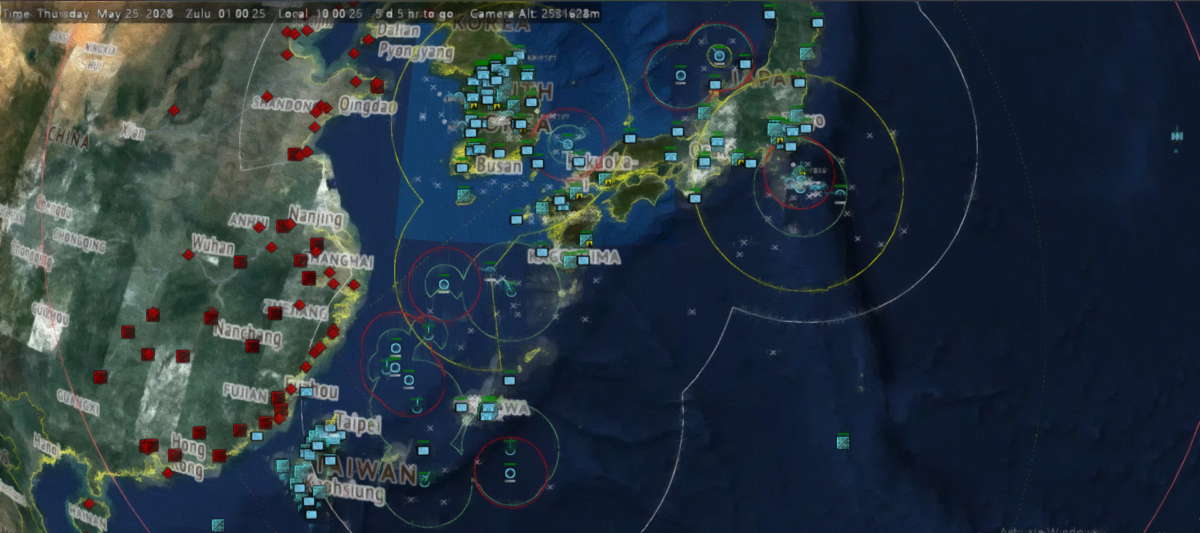
It zooms in, the western side overlaid by a curtain of red, the east side with a tenuously flashing blue. Directly overhead the island lays the “contested battlespace,” and flashing zone of yellow, each day passing in the simulation showing the zone steadily shrinking.
“In our simulations,” says the presenter, “in roughly 15 days at current attrition rates, we expect capitulation of air superiority over Taiwan.”
“What’s our major fallback?” asks a leader, as if it isn’t already known.
The simulation rewinds to 25 May, “Early in the conflict, we enjoyed front line primacy. Though we were caught off guard by the assault, the decision to pre-posture gave us prominence of newer generation hardware. Despite being greatly outnumbered, we walked in with a five-to-one kill/death ratio. I can attribute that to pilot training and skill, Raptors and Lightnings, and the AIM-260 JATM missiles. If the PRC plan was to quickly overwhelm and surround the island—which is widely accepted in Langley—they failed because they incorrectly calculated their ability to counter our 5th and 6th generation hardware. The Chinese naval assault from the southeast of the island was stopped cold by our alert fighters alone. A sub punched a hole in the ship, sending it limping back to port. Right now we still hold air over Taiwan and to the east. ”
INDOPACOM – ATLAS PROJECTED ATTRITION
And then came the bad news, “However, attrition has its obvious costs. We’ve lost roughly half of the Raptors we had on station at Kadena in combat. Keep in mind that we only had 120 of them operational, and 70 are stationed between CONUS and Europe. We’ve lost 17 so far, but Washington wants the rest pulled back in case we need them in the near future.”
“I thought we were deescalating.” says one leader.
“Again, we are to provide options.” the map suddenly shows a collection of dots, each representing individual assets, some small—for individual units, and some large—for unit groups of various types. “Currently, we are already down to what is considered ‘tactical minimum’ in terms of assets. In maintaining ‘strategic ambiguity’, we haven’t committed large scale deployment. The Taiwanese government is allowing full use of their airbases, but they are under nearly constant attack from ballistic missiles launched from mainland China.”
INDOPACOM - ATLAS RECORD 25 MAY 2028 - MISSILE ATTACK PLOT
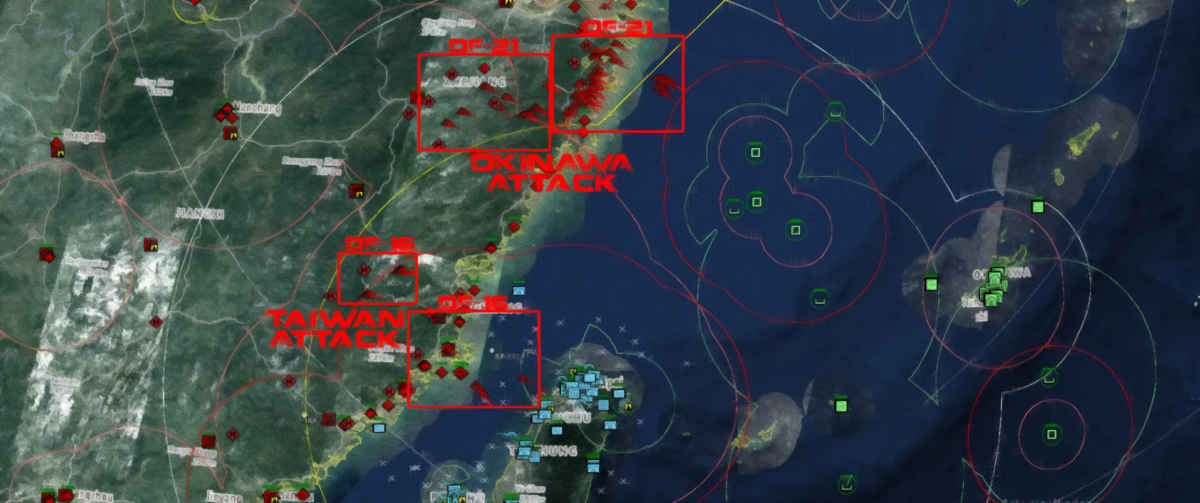
The map then shows the parabolas of little missile figurines, the simulation tracing both launch and impact points since 25 May, “Most of them are launched from directly across the straight, their Fujian province from both mobile and non-mobile launchers clustered around the city of Putian.” the map zooms in to show details, “They also have three airfields there, and they have been launching the majority of their fighters and bombers from these locations. Because we neutralized their two carriers southeast of the island, flying across the straight is all they can risk. Right now with their line of control threatening to reach over Taiwan, we have no ability to counterstrike, nor have we been authorized to do so—until now. After the hypersonic weapon strikes on CONUS, we understand that our directives are changing.”
“Washington wants to save face.” says a leader.
The room grows quieter, the tension building.
“In maintaining the status quo,” says the presenter, “taking an eye for an eye. The question is, can we manage a counter strike that is both effective at neutralizing these bases, and equally effective at not escalating the conflict?”
“In my opinion,” says a leader, “they’ve already escalated. An attack on the mainland is a severe escalation itself. We’re talking between 8,000 and 9,000 lives lost in those cities. Our aim cannot be the same. Plus, we don’t even have those weapons in-theater.”
“Navy is proposing submarine launched Tomahawks.”
“How many are we talking about?”
“At least one hundred. Very similar to Operation Odyssey Dawn in 2011. If we can get the subs in range. The Chinese navy is obviously precluding those efforts. We’ve taken down two of their subs so far with zero losses. We can’t expect that advantage to hold, however.”
“100 Tomahakws?!” one leader seems earnest, “That will barely dent them. Odyssey Dawn intruded into uncontested airspace. This is China we’re talking about. What about PGSS?”
“We can’t use ICBM based hypersonics!” another leader cajoles. “That’s an escalation and could inadvertently trigger a nuclear war. They have no way to determine what’s on the tip of that missile.”
“Well maybe if they joined the fucking START treaty like a normal country, they would know.”
Then, suddenly a man stands up. He’s broad-shouldered, cleanly shaven, his eyes colder than arctic air. Admiral Paxson. He’s visibly angry, which is something unusual about a man widely known for his collected, direct, and level-headed demeanor.
He extends one hand towards the group, all obviously his subordinates.
The room instantly grows quiet.
“We are off course!” he says sternly. “For the past three days, I’ve heard nothing in this room but bullshit strike packages! I’ve sat back to see where the discussion was headed, but I’ll have everyone in this room know that my call with the Joint Chiefs today wasn’t pleasant.”
He then slams his fist on the table, “We need real options. I don’t want to hear about launching Tomahawks that won’t make it through their air defense systems, or the use of long-range strategic bombers that we can’t anywhere near Taiwan without risk of being shot down.” he looks them in the eye for emphasis. “From the sounds of this, we don’t have anything close to air superiority, which is textbook necessary for any SEAD missions to soften up for the Tomahawks. With our top rate hardware being pulled back for conservation, it looks like there is no easy path towards that goal for the time being. Well,” he shrugs, “tough fucking shit. That’s why we’re here, in the positions we are in, to figure this out. We are now functioning cross-branch. We have deescalated this beyond full-theater war. We’re not shooting nukes, we’re not sinking carriers, or landing thousands of boots on the ground yet. This is primarily an air battle, that we are losing, so we need anything with wings and a fucking gun planning to keep our minimal advantage extant.”
He then turns to two gentlemen behind him, “Admiral. Colonel. Please take the floor now. Give us what you have, don’t bullshit me, and I will relay the message to Washington loud and fucking clear.”
They both respond, “Yessir.” and “Uh, yessir.”
The Atlas map focuses now onto air assets, some solid colored, and some partially transparent. Both men, irrespective of their different branches—Navy and Air Force—easily take to giving the overview.
“As presented before, we are down to tactical minimums. Together we have roughly 240 aircraft left in-theater. For the Taiwanese, their situation is even worse. They are reporting only 99 aircraft.”
“Jesus. . .” someone says aloud.
“My god.” says someone else.
“Yes,” the Admiral continues, “62% of their air force is already down. Their strategy—considering the lack of modern hardware from us—has always been to use F-16s for mid-altitude intercepts and their Mirage 2000s for high altitude.” the map shows traces of them in the simulation, dating back to the opening salvos. “But the PLAAF is sending high speed 5th generation assets like J-20 and Su-57s to supplement their high-altitude coverage. The ROCAF Mirages don’t stand much chance against them, but they tried their best. Early on, we fended even footing with Raptors, still maintaining a slight edge in kill/death ratios. Navy had stationed 55 F/A-18s during the posturing, but we’ve lost 27 of them in combat. They’ve been facing off with pretty much everything, from Flankers—J-11 and J-16, to primarily their J-10 and FC-1s—which are analogous to our F-16.”
RED FORCE - COMBAT AIRCRAFT OVERVIEW
The Colonel takes over, “The Viper is the primary aircraft of the ROCAF. It’s a good overall aircraft, light, maneuverable, easy to service, and cheap, but they’re burning through ammunition. Of the more advanced type, they had roughly 700 AIM-120 missiles on hand pre-conflict. They won’t give us exact numbers—”
BLUE FORCE - ROCAF - COMBAT AIRCRAFT OVERVIEW
“—Why not?”
“They don’t want us to call them a ‘lost cause’. The same reason they sent Mirages against J-20s—to show us they are willing to fight, and obviously die for that island. Some of their best pilots were up there first, and they performed incredibly considering the circumstance.”
Admiral Paxson rubs his temples, “I’m assuming another problem is that they are running out of ‘good’ pilots.”
“Yessir. The majority of them are KIA.”
“Very unfortunate.”
“Just another challenge, sir. Attrition will take the best of all of us. American or Taiwanese.
Silence again.
“Now, back to the missiles.” the Colonel continues, “Again, no exact numbers, but our simulations are giving them between a low of 180 and a high of 250 missiles left. Very bad. Plus, they were of the older B and C model designations. Some of them have serial numbers dating from the early 1990s. Thus, their operational and effective range is much lower than that of say, the Chinese PL-10 or PL-12 missiles fielded on their front-line aircraft.”
“So we are nearly at a total disadvantage?” Admiral Paxson asks.
“Yessir. We have units moving from various Air National Guard bases to reinforce our numbers.”
“What’s our timing?”
BLUE FORCE - COMBAT AIRCRAFT OVERVIEW - REINFORCEMENT ALLOCATION
The simulation plays this tidbit, “At best, three days until we can get maybe 40 or 50 aircraft into Taiwan. With Chinese J-20s patrolling the strait, we can expect about 75% of our Air National Guard F-15s and F-16s, and the Navy F/A-18s to make it through. That’s the best case.”
“And the worst?”
“Perhaps 40%.” the Colonel’s voice dips. “We have great pilots, but do understand sir that these aren’t our front-line guys. We’re saving them—if this turns to total war. We don’t want a situation similar to what the ROCAF is currently facing.”
INDOPACOM - ATLAS PROJECT - REINFORCEMENT PATHWAYS THRU 6 JUNE 2028
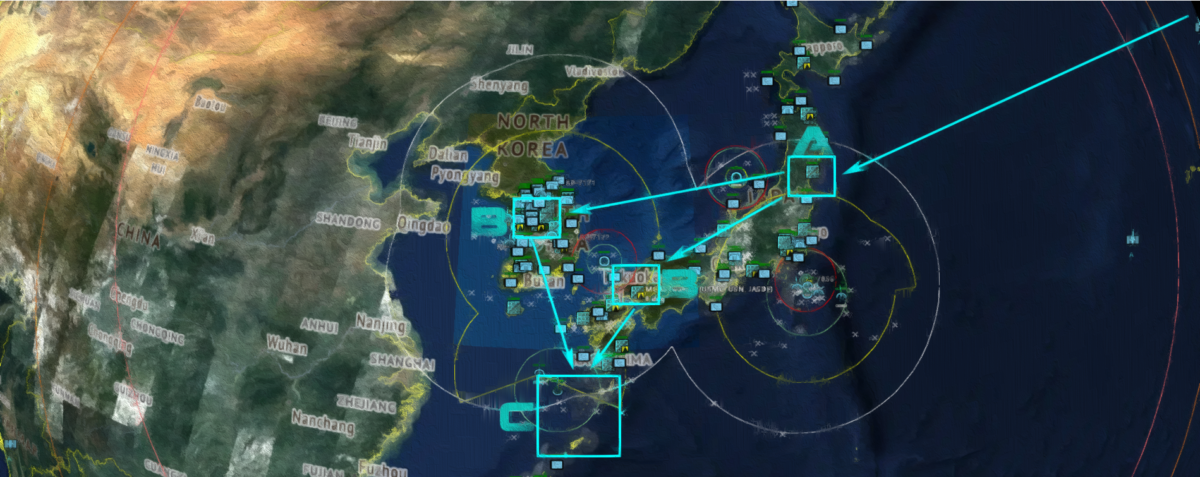
“I don’t want to send in cannon fodder!”
“They are anything but, sir. You told me to be real, so there it is.” says the Colonel. “I send in reinforcements, and at worse, less than half of them make it through. Another problem is tankers, which are by far more valuable—and the Chinese know that. They’re obviously huge, slower, and a much easier target to hit. On the opening day, we lost 12 tankers before our Raptors and Lightnings pushed their J-20s out of the airspace. They don’t have a radar cross section as low as a Raptors or Lightnings, but they are damn hard to find for our 4th gen aircraft. Oh, and ours have AESA. Most of the ROCAF F-16s are still pulse doppler units.”
“Fucking stealths.” Admiral Paxson rubs his forehead, frustrated beyond relief. Then, an idea spurns into his head. He looks to the Admiral, “You said days ago that some of your pilots were successful in bringing them down. A total of 12, correct?”
“Yes, sir.” he nods, extending his hand in caution. “But those were using advanced front-line assets.”
“F-35s?”
“No sir. Those were Air Force. Navy stationed a few F/A-18X during posturing. Super Rhinos. We gave them AIM-260 JATMs. In my opinion, they are incredible missiles. And we flew them with incredible pilots as well.”
INDOPACOM - INDIVIDUAL SERVICE STATS
LT. DOROTHY B. BARTLETT
Service/Branch: United States Navy — PILOT — TOP ACHEIVER
SERVICE -1- VX-33 “Predators” AIR TEST & EVALUATION SQUADRON – NAWS China Lake, Nevada
SERVICE -2- Republic of China Air Force (ROCAF) — 34th Black Cat Squadron
QUALIFIED AIRCRAFT:
F-16C — F-15C/EX — F/A-18C/E/X
In a show of unity, the Air Force Colonel ads, “Reports say that one of pilots shot down four stealth J-20s by herself.”
“Four?”
“That’s correct sir. For non-stealth, she’s taken down eight more over the past two days.”
“Eight?” Paxon’s eyes widen. “Where is she now?”
“Well,” the Admiral says, “we initially thought she was KIA in the morning of 25 May, but we were wrong.” he smiles before continuing, “In light of her ‘skillset’, she’s a genuine all-arounder.”
Admiral Paxson seems annoyed at the vagueness.
To ease the tension, there is clarification, “Put plainly: she’s good at everything. I don’t know where here DNA came from besides somewhere in Kansas, but I don’t care. She was a star officer, if a bit rowdy. Never got a bad grade in her life. Top performer in every test we have, climbed into any aircraft that was available. When it wasn’t available, we made it happen. She qualified in F-16Ns flying as a Navy wargame adversary, eventually making her way into the Navy’s VX-33 Air Test and Evaluation. Over the years she specialized in developing and trialing new methods of bringing the fight to pass. To say the least, her records are very impressive. Sir,” he leans forward, “she flew second wing to a Captain we had stationed during posture, and shot down four high speed, purpose-built, long range interceptor aircraft—in a Super Rhino. The J-20 and Su-57 outclass every aircraft we’ve fielded except for the F-22. In most simulations, she shouldn’t have survived.”
“But she was shot down.”
“And she ejected, drifting in the open sea for five days, paddling with her hands towards Taiwan. Three broken ribs, lacerated skull, 2nd degree burns on both legs. Chinese Coast Guard spotter picked her up, sent a dinghy and tried to take her captive, but she killed them and called in the position of the Coast Guard ship with her radio. ROCAF anti-ship patrol on station sank the PLAN Coast Guard ship. Then she took the dinghy until it sunk in a storm, then went swimming for 11 miles, washed up ashore and was found by Taiwanese fishermen.”
“Jesus. . .”
“Yessir, but I’m not done. Then, they treated her at a local facility that was hit by a ballistic missile. Blew her clear down the hall and impaled her leg.”
Admiral Paxson shakes his head, “So what you’re saying is that she’s out of action.”
“No, sir!” the Admiral denies. “Got an O-5 on the ground now at a FOB just outside of Taipei. He debriefed her. Said after they pulled the rod out of her leg, she took a max dose of Advil, and when the O-5 asked her if she needed anything, she told him—and I quote, ‘another fucking plane’.”
Briefly, there is a lightness in the room. Together, they share a few smiles at best.
“And they found one for her?”
“Lieutenant Dorothy Bartlett. She’s currently in a ROCAF F-16C, leading a squadron of ROCAF and US pilots. There is no longer any separation between Navy and Air Force on the island. We’ve consolidated command—mostly because it just works better this way.”
INDOPACOM - INDIVIDUAL SERVICE STATS
CPT. NEIL J. BANKS
Service/Branch: United States Air Force – PILOT – TOP ACHEIVER
SERVICE -1- 19TH FIGHTER SQUADRON – Joint Base Pearl Harbor-Hickam, Hawaii
SERVICE -2- Republic of China Air Force (ROCAF) — 34th Black Cat Squadron
QUALIFIED AIRCRAFT:
F-16C — F-22A
The Colonel steps forward, “Next up is Captain Neil Banks, Air Force. Raptor pilot with the 90th Fighter Squadron, moved from Elmendorf . Red Flag ace, three years straight. Took down seven Flankers opening night. Ran out of fuel and ditched, paddled his emergency raft to shore.”
“That’s it?” Paxon tries to be light-hearted.
“Yessir.”
“Oh. That’s just very simple compared to the Navy girl.”
“If anything is considered ‘simple,’ sir, we’ll take that.” the Colonel smirks. “He’s also flying an F-16C. Three kills so far.”
“Dual qualified?”
“Yessir. He’s supplementing Bartlett, blending with the ROCAF. They gave them flight lead. Squadron of 15—well 12 after an intercept this morning.”
“Put it plainly, sir,” the Admiral joins, “if we’re going to get any options for counter striking China, it will come from pilots like these two. They are trained specifically in dissimilar combat. Captain Banks took down two Flankers, with no missiles, dodging heat seekers, and gunning them down with BFM. That was after he downed five with missiles. Above that, Lieutenant Bartlett tested modified aircraft, and developed strategies to even the score in situations like this. Check their combat action so far.”
Admiral Paxson rocks forward, “Those two need to be on the ground directing our push. Training. Strategy.”
The two men pause, wondering how to argue with him.
“Sir,” the Admiral takes lead, “with the extremely attrited ROCAF, we’re flying into battlespace with rookie pilots. Like we covered, nearly all of their top-hitters are gone. Without leaders in the air with them, we fear that attrition rates will worsen. Sir, we have 15 days at current rates until we’re unable to hold the defensive line. With Air National Guard reinforcements, I would extend that to maybe 30-40 days tops. Barring any change in Washington—which I doubt—we’ll lose Taiwan. Unless, we let Bartlett and Banks get us a working plan.”
Paxson reiterates, “I need to tell the Joint Chiefs something.”
“You told us to ‘shoot straight’ with you. That’s the no bullshit answer, sir.”
“And if these two pilots die in combat?”
“Clearly these two are among the best pilots in active service. Uh, I’d hate to think about that happening, but if it did, we’d have to start from square one. There are others like them. We’ll see more, especially after they hit the mainland. They know the risks. It’s what they’re built for.”
“Very well.” Paxson says, standing up from his chair, checking his watch. “Give me some real fucking options.”
“Yessir.”
This is a work of fiction. All characters, organizations, and events portrayed in this novel are creations stemming from the author’s imagination. Any events and locations are used fictitiously.
Copyright © 2021 M. F. Super
—
Title Image is a still frame from “Battle: Los Angeles” © Columbia Pictures
Aircraft Images come from the wonderful community at shipbucket.com
Tac Maps are created by me in CMANO – Edited in Photoshop © Matrix Games

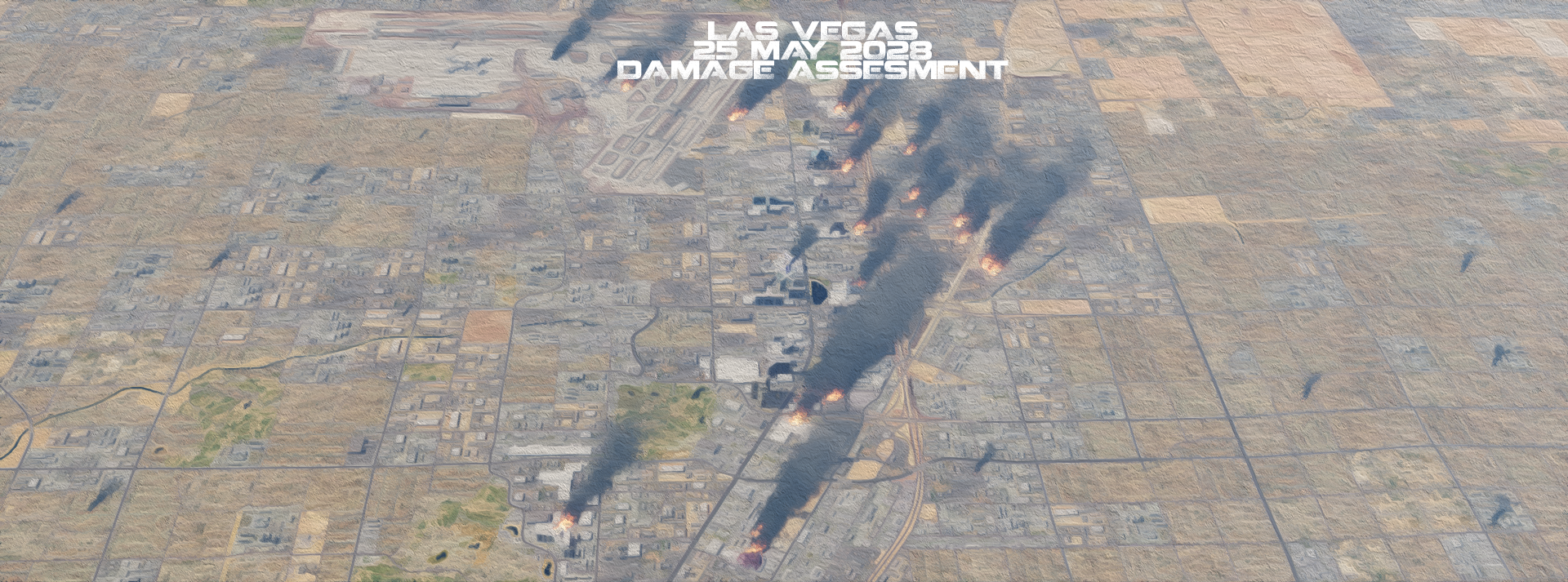
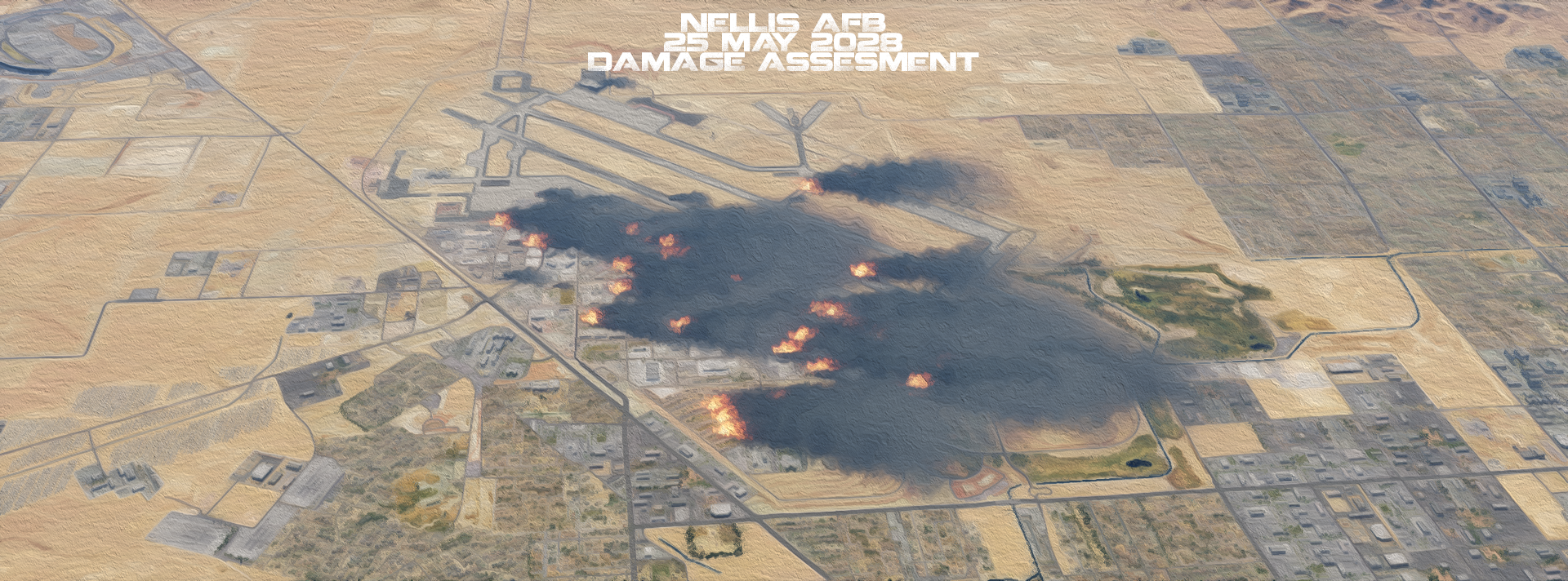
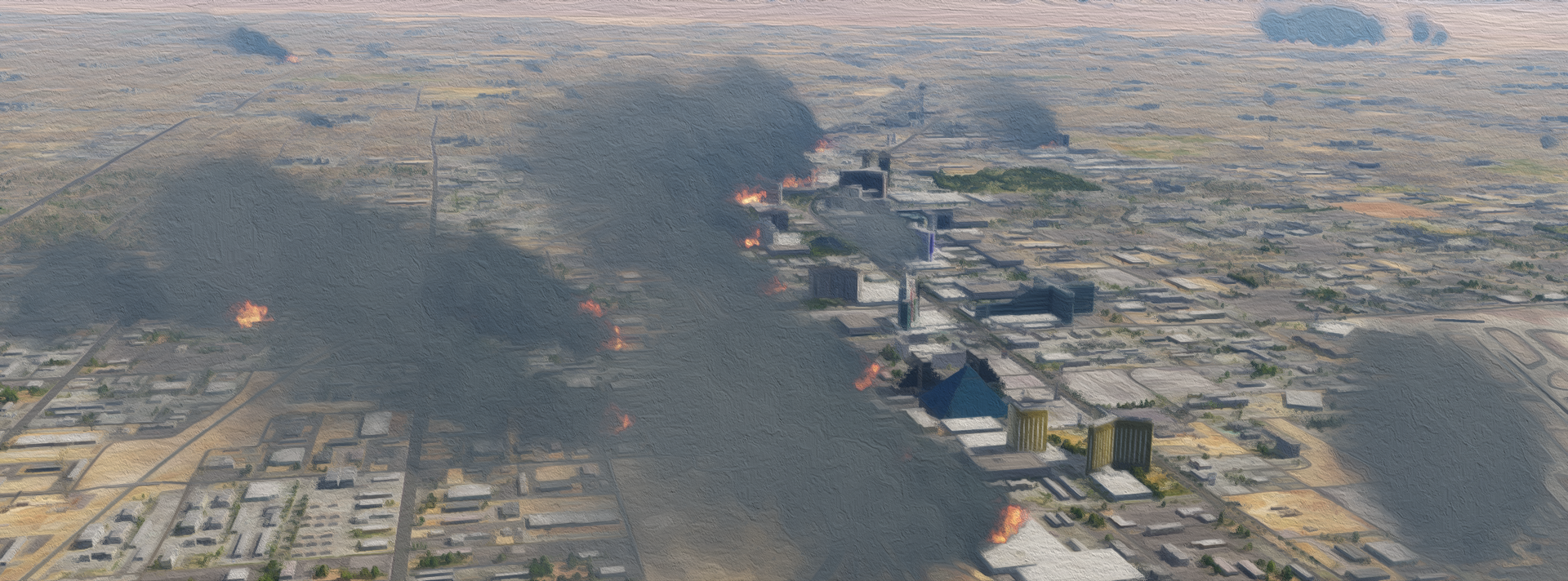
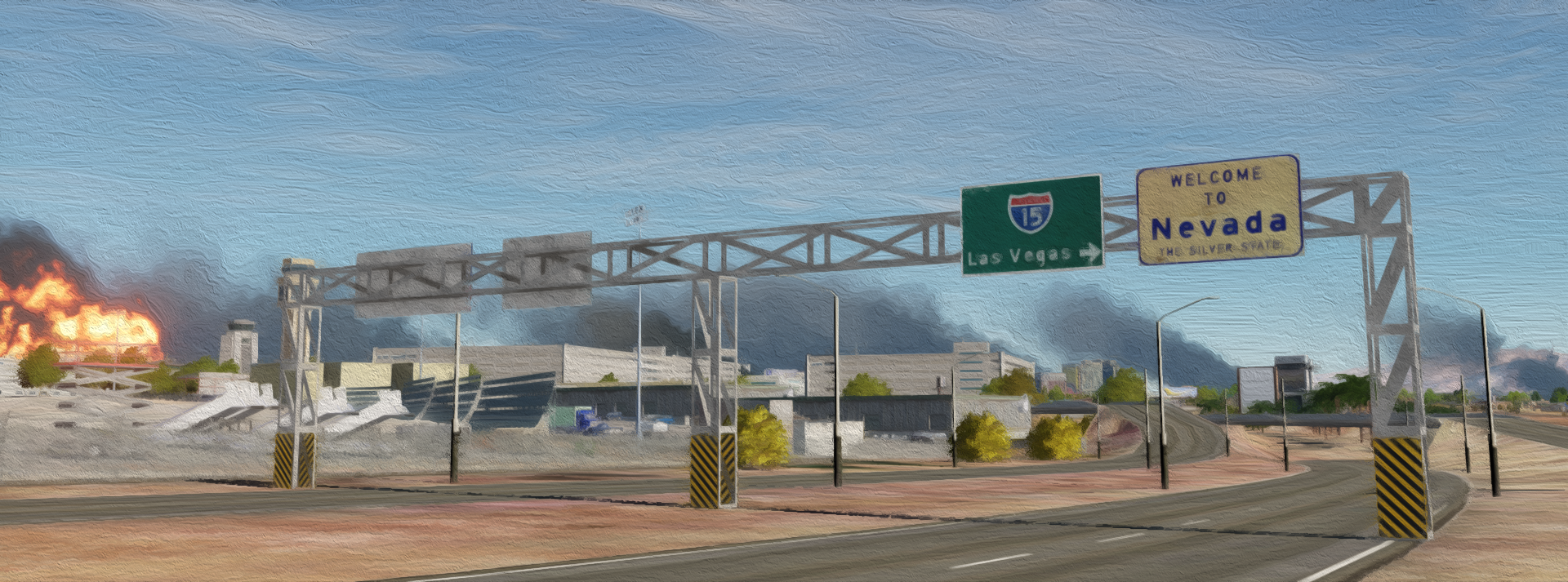

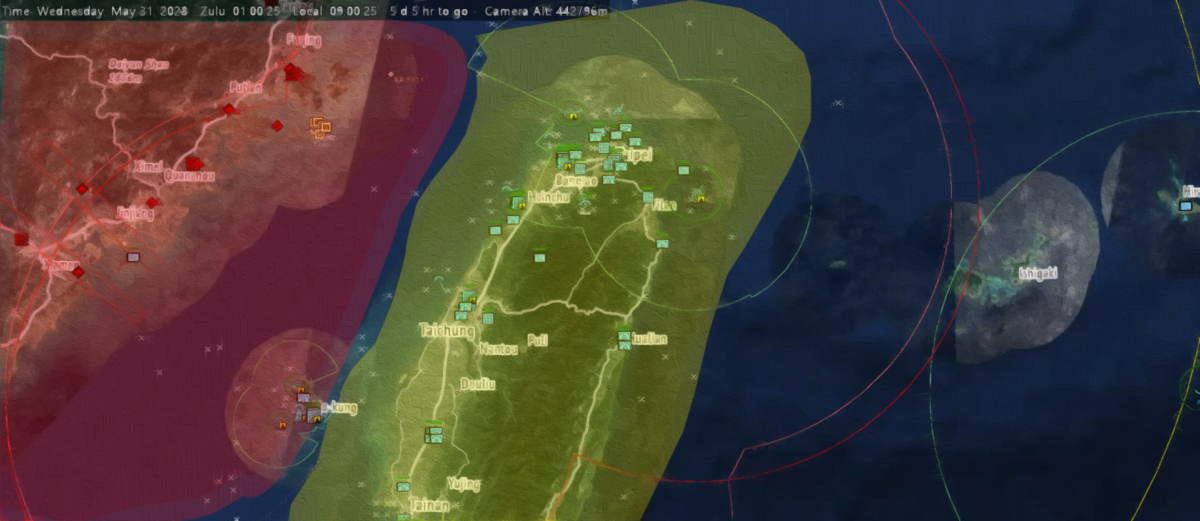
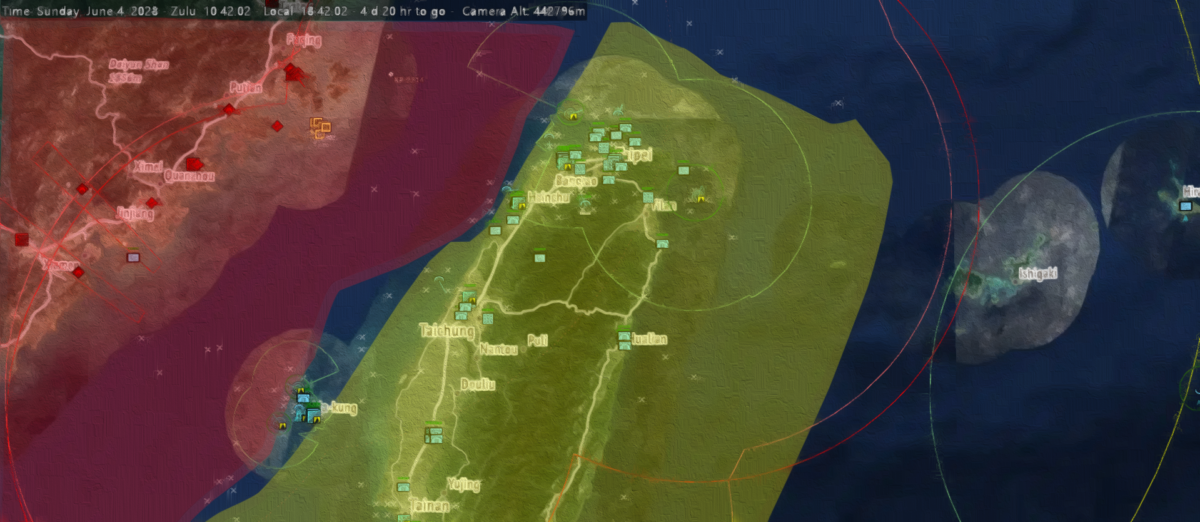
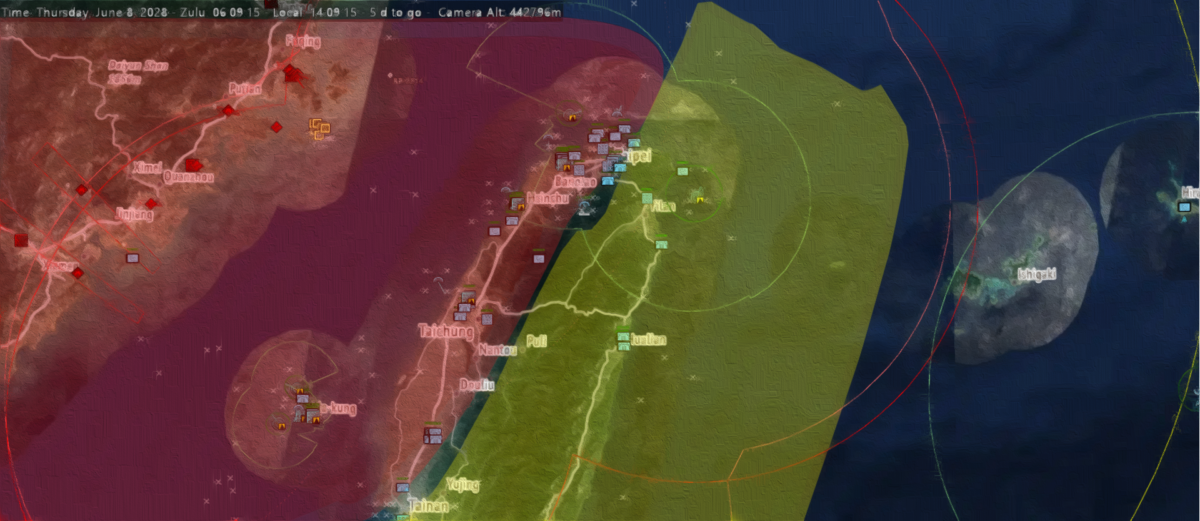
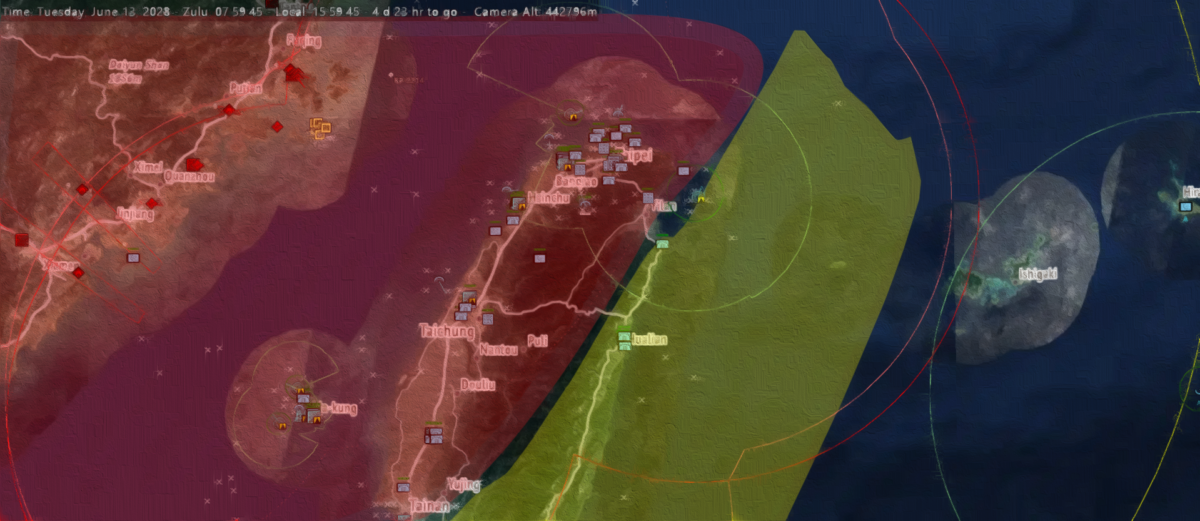










Facebook Comments